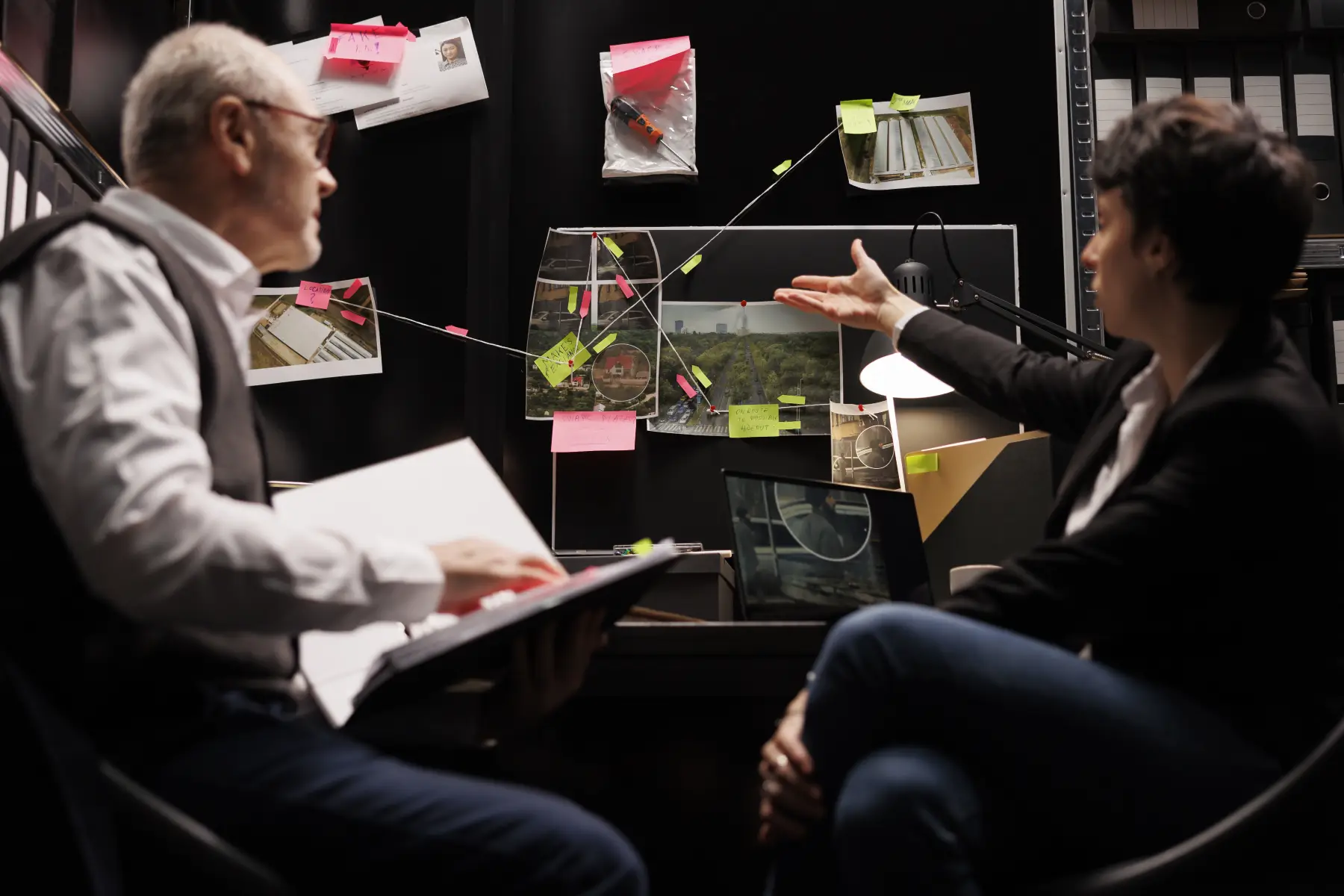Abstract
This whitepaper examines the critical role of collaboration in modern organisations and provides evidence-based strategies to enhance collaborative practices. Drawing from academic research and case studies, it offers actionable recommendations for business leaders and key decision-makers. The paper examines the structural, cultural, technological, and leadership factors that influence collaborative success, with a particular focus on the challenges and opportunities presented by today’s increasingly digital and global business environment.
Table of Contents
- Introduction
- The Business Case for Enhanced Collaboration
- Theoretical Frameworks of Organisational Collaboration
- Structural Enablers of Collaboration
- Cultural Foundations for Collaborative Excellence
- Technological Infrastructure and Digital Collaboration
- Leadership for Collaborative Environments
- Measuring Collaborative Success
- Implementation Roadmap
- Conclusion
- References
Introduction
In an increasingly complex and interconnected business landscape, organisational collaboration has transitioned from a desirable attribute to an essential capability. The ability of teams to work effectively across functional, geographical, and hierarchical boundaries directly impacts an organisation’s capacity for innovation, adaptability, and sustainable competitive advantage (Adler et al., 2011). However, despite widespread recognition of its importance, many organisations struggle to foster truly effective collaborative environments.
This whitepaper addresses the critical question facing business leaders today: How can organisations systematically promote greater working collaboration to drive business performance? Drawing upon rigorous academic research and practical business applications, it provides a comprehensive framework for understanding and enhancing collaborative capabilities across all organisational dimensions.
The need for such a framework has never been more pressing. The COVID-19 pandemic fundamentally altered work patterns, accelerating the shift toward remote and hybrid operational models. Organisations now face the challenge of rebuilding collaborative capabilities in environments where traditional physical proximity can no longer be assumed (Neeley, 2021). Simultaneously, competitive pressures demand ever-greater levels of innovation and operational efficiency that can only be achieved through effective cross-functional teamwork.
This paper aims to equip senior executives, departmental leaders, and organisational development professionals with evidence-based strategies and practical tools to transform their organisational collaborative capabilities. It moves beyond simplistic prescriptions to address the complex interplay of structure, culture, technology, and leadership that determines collaborative success.
The Business Case for Enhanced Collaboration
Quantifiable Benefits
The business value of effective collaboration extends far beyond intangible benefits. Research by Deloitte (2018) demonstrated that organisations with strong collaborative cultures are twice as likely to outgrow competitors and significantly more likely to be profitable. Similarly, a landmark study by the McKinsey Global Institute estimated that improved communication and collaboration through social technologies could raise the productivity of knowledge workers by 20-25% (Bughin et al., 2012).
The Boston Consulting Group’s research revealed that companies rated as “strong collaborators” achieved superior financial performance across multiple measures, including:
- 12% higher profit margins
- 9% higher revenue growth
- 10% greater customer satisfaction scores
- 17% faster time-to-market for new products (BCG, 2019)
These tangible benefits translate into sustainable competitive advantage in increasingly crowded marketplaces.
Innovation Impact
Perhaps most critically, collaboration directly affects an organisation’s capacity for innovation. Cross-functional collaboration specifically has been linked to breakthrough product development and service innovation. Research by Harvard Business School has found that teams with members from diverse functional backgrounds generate more creative solutions and identify more potential obstacles to implementation than homogeneous teams (Edmondson & Nembhard, 2009).
A study published in the Journal of Product Innovation Management demonstrated that the quality of cross-functional collaboration was the strongest predictor of new product development success, more significant even than market conditions or technological capability (Troy et al., 2008).
Risk Mitigation and Resilience
Beyond performance enhancement, collaborative excellence also serves as a risk mitigation strategy. Organisations with robust collaborative networks demonstrate greater resilience during disruptions. Research during the COVID-19 pandemic revealed that organisations with pre-existing collaborative cultures adapted more quickly to remote work requirements and maintained higher productivity levels during the transition (Neeley, 2021).
Furthermore, effective collaboration creates organisational redundancy in knowledge-sharing and decision-making capabilities. This redundancy ensures that critical operational knowledge is distributed rather than concentrated, reducing vulnerability to key person risks and enhancing organisational continuity (Cross et al., 2016).
Theoretical Frameworks of Organisational Collaboration
Defining Collaboration in Organisational Contexts
Before addressing practical applications, it is essential to establish a clear definition of collaboration within organisational settings. Collaboration extends beyond mere cooperation or coordination. As defined by Mattessich and Monsey (1992), collaboration represents “a mutually beneficial and well-defined relationship entered into by two or more organisations or individuals to achieve common goals.”
In organisational contexts, collaboration involves joint decision-making, shared responsibility for outcomes, pooled resources, and integrated problem-solving approaches that leverage diverse perspectives and expertise.
Social Exchange Theory
Several theoretical frameworks provide insight into the mechanisms that drive collaborative behaviour. Social Exchange Theory (SET), pioneered by Blau (1964) and elaborated by Cropanzano and Mitchell (2005), conceptualises collaboration as a series of interdependent exchanges. In this framework, individuals and groups engage in collaborative activities when they perceive that the potential benefits outweigh the costs.
For organisational leaders, SET highlights the importance of ensuring that collaborative efforts are perceived as reciprocally beneficial. When team members believe their contributions are valued and reciprocated, they become more willing to share knowledge, resources, and effort in pursuit of collective goals. Conversely, when collaboration is perceived as exploitative or unbalanced, engagement diminishes rapidly.
Communities of Practice
Wenger’s (1998) Communities of Practice (CoP) framework offers another valuable perspective on organisational collaboration. CoPs are groups of people who share a concern or passion for something they do and learn how to do it better through regular interaction. This framework emphasises the social learning dimension of collaboration, highlighting how shared practice creates opportunities for tacit knowledge transfer.
The CoP perspective suggests that effective collaboration requires not only structural opportunities for interaction but also the cultivation of shared identities and a common purpose around professional practices. For organisations, this translates into the need to support informal learning networks alongside formal collaborative structures.
Network Theory
Network theory provides analytical tools for understanding collaboration patterns within organisations. As described by Cross and Parker (2004), organisational networks consist of nodes (individuals) connected by ties (relationships) through which resources, information, and influence flow. The configuration of these networks—their density, centrality, and clustering patterns—shapes collaborative possibilities.
Network analysis reveals that effective collaboration depends not just on individual willingness to collaborate but on the architectural properties of the overall relationship network. Organisations with strategic network connectivity—characterised by appropriate levels of density, bridging ties across groups, and distributed connectivity—demonstrate superior collaborative capabilities.
Structural Enablers of Collaboration
Organisational Design for Collaboration
Traditional hierarchical structures, while efficient for routine operations, often impede collaboration by reinforcing functional silos and creating informational bottlenecks. Research by Tushman and O’Reilly (2002) demonstrated that organisations must design for “structural ambidexterity”—creating systems that simultaneously support operational efficiency and cross-functional collaboration.
Several structural approaches have proven effective:
Matrix Organisations: These dual-reporting structures strike a balance between functional expertise and cross-functional project needs. While challenging to implement, properly managed matrix organisations strengthen collaborative capabilities by legitimising multiple reporting relationships and creating formal cross-functional linkages (Galbraith, 2009).
Team-Based Structures: Organising work around cross-functional teams rather than functional departments fundamentally alters collaborative dynamics. Research by Edmondson (2012) has shown that well-designed team-based structures can increase knowledge sharing and collective problem-solving. Implementing such structures requires careful attention to team composition, clear accountability frameworks, and appropriate support systems.
Communities of Excellence: Establishing formal communities that transcend departmental boundaries creates collaboration hubs around specific domains of expertise. Unlike traditional departments, these communities focus on knowledge sharing and practice development rather than operational management (Wenger et al., 2002).
Physical and Virtual Workspace Design
The physical environment has a significant influence on collaborative behaviour. While open-plan offices were once considered a panacea for collaboration, research now suggests a more nuanced approach. A study by Harvard Business School found that transitioning to open office architecture decreased face-to-face interaction by approximately 70% as employees sought privacy through electronic communication (Bernstein & Turban, 2018).
Evidence-based approaches to physical workspace design include:
- Activity-Based Working (ABW): Providing varied spaces designed for different types of collaborative and individual work, allowing employees to select the most suitable settings for specific tasks.
- Collision Spaces: Strategically designed informal meeting areas that increase the probability of unplanned interactions between employees from different departments.
- Collaborative Technology Integration: Embedding technology tools within physical spaces to support seamless transitions between face-to-face and digital collaboration.
In virtual environments, design principles shift toward digital architecture. Research by Gibson and Cohen (2003) identified several critical factors for virtual collaboration spaces:
- Technological Accessibility: Ensuring all team members have equitable access to collaboration platforms and tools.
- Synchronous and Asynchronous Capabilities: Supporting both real-time interaction and time-shifted collaboration.
- Ambient Awareness Tools: Digital systems that create peripheral awareness of colleagues’ activities and availability, mimicking the awareness naturally present in physical environments.
Resource Allocation and Incentive Alignment
Collaboration flourishes when resources are allocated appropriately and aligned with incentive structures. Research consistently demonstrates that misaligned incentives frequently undermine collaborative intent (Kerr, 1975). When reward systems recognise only individual contributions, collaboration becomes irrational from an individual utility perspective.
Effective resource and incentive approaches include:
- Dedicated Collaboration Budgets: Allocating specific resources for cross-functional initiatives rather than requiring departments to fund collaborative efforts from existing budgets.
- Team-Based Performance Metrics: Implementing evaluation systems that measure collective outcomes alongside individual contributions.
- Collaborative Behaviour Recognition: Explicitly rewarding knowledge sharing, cross-functional support, and other collaborative behaviours through formal recognition systems.
- Career Advancement Criteria: Incorporating collaborative capabilities into promotion criteria and leadership development pathways.
A study by Gardner (2017) found that organisations that explicitly incorporated collaborative behaviours into performance management systems saw a 29% increase in collaborative activity compared to those that maintained purely individual metrics.
Cultural Foundations for Collaborative Excellence
Psychological Safety and Trust
Professor Amy Edmondson’s (1999) groundbreaking research on psychological safety demonstrated its critical role in enabling collaboration. Psychological safety—the shared belief that the team environment is safe for interpersonal risk-taking—creates the foundation for knowledge sharing, constructive conflict, and collective learning.
Organisations with high psychological safety demonstrate:
- Greater willingness to share partial ideas and early-stage thinking
- More effective error reporting and problem identification
- Higher levels of constructive dissent and debate
- Increased cross-boundary communication
Research by Google’s Project Aristotle identified psychological safety as the most significant predictor of team effectiveness, more important than individual talent or expertise (Duhigg, 2016). For leaders seeking to enhance collaboration, building psychological safety represents a critical priority.
Practical approaches to enhancing psychological safety include:
- Leadership Vulnerability: Modelling appropriate vulnerability by acknowledging limitations and mistakes
- Productive Response to Failures: Implementing blameless post-mortems and focusing on systemic rather than individual factors
- Active Invitation of Diverse Perspectives: Explicitly soliciting contrary viewpoints, especially from more junior team members
- Separating Idea Evaluation from Idea Generation: Creating distinct phases for creative thinking and critical assessment
Shared Purpose and Collective Identity
Collaboration thrives when participants perceive a meaningful shared purpose that transcends departmental objectives. Research by Grant (2012) demonstrated that prosocial motivation—the desire to benefit others—significantly enhances collaborative effort and persistence.
Organisations can cultivate shared purpose through:
- Compelling Mission Narratives: Articulating how collaborative work advances meaningful organisational purposes
- Impact Transparency: Making visible the effects of collaborative work on customers, communities, and other stakeholders
- Customer Connection Opportunities: Creating direct exposure to customer experiences and needs across functions
- Cross-functional Purpose Forums: Convening diverse stakeholders to define shared objectives collectively
A longitudinal study by Harvard Business School found that teams with strong shared purpose demonstrated 22% higher levels of discretionary collaborative effort and 31% greater persistence when facing obstacles (Gino et al., 2015).
Communication Norms and Feedback Culture
Communication patterns form the substrate upon which collaboration develops. Research by Pentland (2012) at MIT’s Human Dynamics Laboratory identified specific communication patterns that characterised high-performing collaborative teams, including:
- Energy and engagement levels (the number and nature of exchanges)
- Distribution of communication among team members
- Frequency of side conversations outside formal meetings
- Balance of inquiry and advocacy in discussions
Organisations can cultivate productive communication norms through the following:
- Dialogue Training: Teaching specific skills for balancing advocacy with inquiry
- Structured Feedback Processes: Implementing regular, bidirectional feedback mechanisms
- Communication Agreements: Establishing explicit team agreements about communication channels, response times, and meeting protocols
- Information Sharing Expectations: Setting clear norms regarding documentation, knowledge sharing, and transparency
Professor Edgar Schein’s work on dialogue (2013) emphasises the distinction between discussion (advocacy-focused) and dialogue (inquiry-focused) communication. Organizations that explicitly cultivate dialogue capabilities demonstrate measurably higher collaborative problem-solving effectiveness.
Technological Infrastructure and Digital Collaboration
Collaboration Technology Ecosystem
The proliferation of digital collaboration tools has created both opportunities and challenges. Research by the Nielsen Norman Group (2020) found that organisations use an average of 8.6 different collaboration tools, with employees frequently reporting tool fragmentation and attention switching as barriers to effective collaboration.
Rather than focusing solely on individual tools, organisations must design coherent collaboration technology ecosystems that:
- Integrate across platforms to reduce context-switching
- Align with existing work processes rather than requiring process redesign
- Support both real-time and asynchronous collaboration modes
- Balance functionality with usability and cognitive load
Research by Forrester (2019) found that organisations taking an ecosystem approach to collaboration technology realized 31% higher adoption rates and 24% greater self-reported collaboration effectiveness than those implementing disconnected point solutions.
Knowledge Management and Information Flow
Effective collaboration depends on access to shared knowledge repositories and frictionless information flows. A study by the McKinsey Global Institute found that employees spend approximately 20% of their working time searching for internal information or seeking assistance from colleagues (Bughin et al., 2012).
Leading organisations address these challenges through:
- Enterprise Knowledge Graphs: Connecting related information across systems to create contextual discovery
- Intelligent Search Capabilities: Implementing semantic search technologies that understand intent rather than just keywords
- Content Curation Roles: Establishing formal responsibilities for maintaining high-quality shared knowledge repositories
- Process Documentation Standards: Creating consistent approaches to capturing and sharing procedural knowledge
Research by the Association for Information and Image Management (AIIM) found that organisations with mature knowledge management practices demonstrated 30% higher collaboration effectiveness scores and 25% faster decision-making processes (AIIM, 2018).
Digital Dexterity and Collaboration Literacy
Technology alone cannot ensure effective collaboration. The human capability to leverage digital tools—what Gartner terms “digital dexterity”—ultimately determines collaborative outcomes. A study by MIT Sloan Management Review found that organisations that invested in developing employee collaboration skills alongside technology implementation saw 44% higher returns on their technology investments (Kane et al., 2019).
Key capabilities for digital collaboration include:
- Multichannel Communication Competence: Ability to select appropriate channels for different types of communication
- Digital Facilitation Skills: Capability to design and guide effective virtual meetings and workshops
- Asynchronous Coordination Techniques: Methods for maintaining momentum between synchronous interactions
- Digital Collaboration Etiquette: Shared norms for respectful and effective digital interaction
Organisations can develop these capabilities through structured training, peer learning networks, and collaborative technology champions who model effective usage and coach colleagues.
Leadership for Collaborative Environments
Leadership Behaviours that Foster Collaboration
Collaborative environments require leadership approaches that differ substantially from traditional command-and-control models. Research by Ibarra and Hansen (2011) identified specific leadership behaviours associated with collaborative excellence:
- Boundary Spanning: Actively connecting individuals and groups across organisational divisions
- Selective Involvement: Engaging directly in collaborative processes at strategic moments while avoiding micromanagement
- Network Awareness: Understanding the informal relationship networks that facilitate or impede collaboration
- Conflict Facilitation: Skills in productively addressing tensions inherent in collaborative work
A longitudinal study by Zhang et al. (2015) demonstrated that leaders who exhibited these behaviours saw a 31% increase in team collaborative effectiveness compared to those who maintained traditional directive approaches.
Middle Management as Collaboration Catalysts
While executive sponsorship remains crucial, research increasingly highlights the pivotal role of middle managers in enabling or blocking collaborative initiatives. Described by Huy (2001) as “linking pins,” middle managers translate strategic collaborative intent into operational reality.
Effective organisations equip middle managers to serve as collaboration catalysts through:
- Collaboration Advocacy Training: Developing skills for championing cross-functional initiatives
- Horizontal Performance Metrics: Adding cross-boundary objectives to traditionally vertical accountability measures
- Peer Network Development: Creating forums for middle managers to build relationships across functions
- Resource Allocation Authority: Providing discretionary resources specifically for collaborative initiatives
Research by the the London Business School found that organisations focusing their development efforts on middle managers’ collaborative capabilities saw a twice the implementation success rate for cross-functional initiatives compared to those focusing exclusively on senior leadership or frontline employees (Sull et al., 2018).
Building Collaborative Capacity Through Team Development
Team development represents a critical leadership responsibility in collaborative environments. Hackman’s (2011) research on team effectiveness identified specific conditions that leaders must establish:
- Compelling Direction: A clear, challenging purpose that requires collaboration
- Enabling Structure: Team composition and norms that support collaborative work
- Supportive Context: Organisational systems aligned with collaborative requirements
- Shared Mindset: Collective understanding of interdependence and collaboration value
Effective team development practices include:
- Team Chartering: Creating explicit agreements about collaboration approaches at project initiation
- Process Reflection: Scheduling regular reviews of collaborative effectiveness separate from task progress
- Capability Mapping: Documenting and sharing team members’ expertise and contribution areas
- Deliberate Experience Diversification: Strategically varying team composition to build collaborative networks
A meta-analysis by Delizonna (2017) found that teams engaged in structured development activities demonstrated 34% higher levels of collaborative behaviour and 28% better performance on complex tasks compared to teams focused solely on task execution.
Measuring Collaborative Success
Collaboration Metrics Framework
Despite its importance, collaboration often remains unmeasured in organisational performance systems. Research by Cross et al. (2016) found that while 75% of organisations identified collaboration as critical to success, only 22% formally measured collaborative effectiveness.
A comprehensive measurement approach includes metrics across four dimensions:
1. Activity Metrics
- Frequency of cross-functional meetings and communications
- Participation distribution in collaborative forums
- Information sharing volume and directionality
- Network analysis of communication patterns
2. Capability Metrics
- Collaborative skill assessments
- Knowledge sharing behaviour evaluations
- Cross-functional relationship mapping
- Collaborative platform adoption and utilization
3. Impact Metrics
- Speed of cross-functional decision making
- Quality of collaborative outputs
- Innovation metrics (ideation rate, implementation success)
- Resource efficiency in collaborative processes
4. Perception Metrics
- Employee experience of collaborative culture
- Customer perception of organisational integration
- Partner assessments of collaborative effectiveness
- Cross-functional trust indicators
Organisations must select metrics aligned with their specific collaborative priorities while ensuring measurements do not inadvertently incentivise counterproductive behaviours.
Maturity Model Assessment
Many organisations benefit from situating their current collaborative capabilities within a maturity framework. The Collaboration Maturity Model developed by the Institute for Corporate Productivity (i4cp) identifies five progressive levels of collaborative capability:
- Ad Hoc Collaboration: Collaboration occurs informally and inconsistently, primarily through individual relationships
- Defined Collaboration: Basic collaborative processes and tools are established but unevenly adopted
- Managed Collaboration: Consistent collaborative practices exist with clear governance and measurement
- Optimized Collaboration: Collaboration is systematically improved based on continuous measurement and innovation
- Transformative Collaboration: Collaboration becomes a distinctive organisational capability driving competitive advantage
Research by i4cp found that organisations progressing from Level 2 to Level 4 saw an average 31% improvement in innovation metrics and a 23% enhancement in speed-to-market performance (i4cp, 2020).
Continuous Improvement Mechanisms
Beyond measurement, leading organisations implement systematic processes to enhance collaborative effectiveness. These include:
- Collaboration Analytics: Using digital tools to analyze interaction patterns and identify improvement opportunities
- Regular Retrospectives: Conducting structured reviews of collaborative processes after significant initiatives
- Cross-Functional Learning Forums: Creating dedicated spaces for sharing effective collaborative practices
- Collaborative Innovation Challenges: Channeling improvement efforts toward specific high-value collaborative opportunities
A longitudinal study by IBM’s Institute for Business Value found that organisations implementing structured collaboration improvement processes demonstrated 37% higher returns on their collaboration technology investments compared to those focusing solely on tool deployment (IBM, 2018).
Implementation Roadmap
Assessment and Vision Development
Successful collaborative transformation begins with clear-eyed assessment and compelling vision. Effective approaches include:
- Collaboration Network Analysis: Mapping existing relationship networks to identify strengths and gaps
- Collaboration Barrier Assessment: Conducting structured analysis of obstacles to effective collaboration
- Future State Visioning: Engaging stakeholders in developing specific pictures of enhanced collaborative functioning
- Value Case Development: Quantifying potential benefits of improved collaboration in an organisational context
Cross-industry research by Deloitte indicates that organisations beginning transformation with robust assessment and visioning are 2.3 times more likely to achieve sustainable collaborative improvement compared to those starting with tool implementation or policy changes (Deloitte, 2019).
Strategic Prioritisation and Phasing
Given limited resources, organisations must prioritise their strategic collaborative enhancement efforts. Effective approaches include:
- Value Stream Analysis: Identifying business processes where collaborative improvement would create maximum value
- Pilot Selection Criteria: Developing explicit criteria for selecting initial collaborative enhancement initiatives
- Capability Building Sequence: Planning progressive development of collaborative capabilities across the organisation
- Success Catalyst Identification: Locating natural collaborative strengths that can be amplified and extended
Research by McKinsey & Company found that organisations implementing a phased approach to collaborative transformation achieved 41% higher sustainability of changes compared to those attempting comprehensive transformation simultaneously (De Smet et al., 2018).
Change Management for Collaborative Transformation
Collaboration enhancement represents a significant cultural and behavioural change that requires deliberate change management. Critical elements include:
- Stakeholder Engagement Planning: Mapping key influencers and designing tailored engagement approaches
- Leader Alignment Process: Ensuring consistent understanding and messaging across leadership levels
- Success Story Amplification: Systematically identifying and communicating early collaboration wins
- Resistance Management Strategy: Anticipating and addressing sources of resistance to collaborative practices
The Boston Consulting Group’s research on change success factors found that transformation efforts incorporating dedicated collaboration-specific change management were 3.7 times more likely to achieve targeted outcomes compared to those relying on general change approaches (BCG, 2020).
Conclusion
Enhancing organisational collaboration represents both a strategic imperative and a significant implementation challenge. As this whitepaper has demonstrated, truly effective collaboration requires aligned intervention across structural, cultural, technological, and leadership dimensions.
The research-based approaches outlined provide a comprehensive framework for organisations seeking to transform their collaborative capabilities. By addressing both the technical systems that enable collaboration and the human factors that determine its effectiveness, organisations can develop collaborative advantage in increasingly complex and competitive environments.
For executive leaders and key decision-makers, the journey toward collaborative excellence requires sustained commitment, systematic measurement, and continuous refinement. However, the potential rewards—innovation capacity, operational efficiency, employee engagement, and market responsiveness—justify this investment.
The organisations that thrive in the coming decades will be those that master the art and science of collaboration—creating environments where diverse perspectives converge, knowledge flows freely, and collective intelligence becomes greater than the sum of individual contributions.
References
Adler, P. S., Heckscher, C., & Prusak, L. (2011). Building a collaborative enterprise. Harvard Business Review, 89(7-8), 94-101.
Association for Information and Image Management (AIIM). (2018). Intelligent Information Management: The State of the Industry 2018-2019. AIIM Research Publication.
Bernstein, E. S., & Turban, S. (2018). The impact of the ‘open’ workspace on human collaboration. Philosophical Transactions of the Royal Society B: Biological Sciences, 373(1753), 20170239.
Blau, P. M. (1964). Exchange and power in social life. New York: Wiley.
Boston Consulting Group (BCG). (2019). The Collaborative Organization: How to Make Employee Networks Really Work. BCG Henderson Institute.
Boston Consulting Group (BCG). (2020). The Science of Organizational Change: How Leaders Can Significantly Improve Their Odds of Success. BCG Perspectives.
Bughin, J., Chui, M., & Manyika, J. (2012). Capturing business value with social technologies. McKinsey Quarterly, 4, 72-80.
Cross, R., & Parker, A. (2004). The hidden power of social networks: Understanding how work really gets done in organisations. Harvard Business School Press.
Cross, R., Rebele, R., & Grant, A. (2016). Collaborative overload. Harvard Business Review, 94(1), 74-79.
Cropanzano, R., & Mitchell, M. S. (2005). Social exchange theory: An interdisciplinary review. Journal of Management, 31(6), 874-900.
De Smet, A., Lurie, M., & St. George, A. (2018). Leading agile transformation: The new capabilities leaders need to build 21st-century organizations. McKinsey & Company.
Delizonna, L. (2017). High-performing teams need psychological safety. Here’s how to create it. Harvard Business Review Digital Articles.
Deloitte. (2018). The collaborative economy: Unlocking the power of the workplace crowd. Deloitte Insights.
Deloitte. (2019). Future of work: The people imperative. Deloitte Global Human Capital Trends.
Duhigg, C. (2016, February 25). What Google learned from its quest to build the perfect team. The New York Times Magazine.
Edmondson, A. (1999). Psychological safety and learning behavior in work teams. Administrative Science Quarterly, 44(2), 350-383.
Edmondson, A. C. (2012). Teaming: How organizations learn, innovate, and compete in the knowledge economy. John Wiley & Sons.
Edmondson, A. C., & Nembhard, I. M. (2009). Product development and learning in project teams: The challenges are the benefits. Journal of Product Innovation Management, 26(2), 123-138.
Forrester Research. (2019). The Total Economic Impact of Modern Collaboration Tools. Forrester Consulting.
Galbraith, J. R. (2009). Designing matrix organizations that actually work: How IBM, Procter & Gamble and others design for success. Jossey-Bass.
Gardner, H. K. (2017). Smart collaboration: How professionals and their firms succeed by breaking down silos. Harvard Business Review Press.
Gibson, C. B., & Cohen, S. G. (Eds.). (2003). Virtual teams that work: Creating conditions for virtual team effectiveness. John Wiley & Sons.
Gino, F., Staats, B., Jachimowicz, J., Lee, J., & Menges, J. (2015). Resilience in the face of adversity: How teams adapt to crisis situations. Harvard Business School Working Paper.
Grant, A. M. (2012). Leading with meaning: Beneficiary contact, prosocial impact, and the performance effects of transformational leadership. Academy of Management Journal, 55(2), 458-476.
Hackman, J. R. (2011). Collaborative intelligence: Using teams to solve hard problems. Berrett-Koehler Publishers.
Huy, Q. N. (2001). In praise of middle managers. Harvard Business Review, 79(8), 72-79.
Ibarra, H., & Hansen, M. T. (2011). Are you a collaborative leader? Harvard Business Review, 89(7-8), 68-74.
IBM Institute for Business Value. (2018). The business value of collaboration. IBM Corporation.
Institute for Corporate Productivity (i4cp). (2020). The Critical Human Capital Issues of 2020. i4cp Research.
Kane, G. C., Phillips, A. N., Copulsky, J., & Andrus, G. (2019). The technology fallacy: How people are the real key to digital transformation. MIT Press.
Kerr, S. (1975). On the folly of rewarding A, while hoping for B. Academy of Management Journal, 18(4), 769-783.
Mattessich, P. W., & Monsey, B. R. (1992). Collaboration: What makes it work. A review of research literature on factors influencing successful collaboration. Amherst H. Wilder Foundation.
Neeley, T. (2021). Remote work revolution: Succeeding from anywhere. Harper Business.
Nielsen Norman Group. (2020). Collaboration tools user experience: Challenges and opportunities. Nielsen Norman Group Research Report.
Pentland, A. (2012). The new science of building great teams. Harvard Business Review, 90(4), 60-69.
Schein, E. H. (2013). Humble inquiry: The gentle art of asking instead of telling. Berrett-Koehler Publishers.
Sull, D., Homkes, R., & Sull, C. (2018). Why strategy execution unravels—and what to do about it. Harvard Business Review, 93(3), 58-66.
Troy, L. C., Hirunyawipada, T., & Paswan, A. K. (2008). Cross-functional integration and new product success: An empirical investigation of the findings. Journal of Marketing, 72(6), 132-146.
Tushman, M. L., & O’Reilly III, C. A. (2002). Winning through innovation: A practical guide to leading organisational change and renewal. Harvard Business Press.
Wenger, E. (1998). Communities of practice: Learning, meaning, and identity. Cambridge University Press.
Wenger, E., McDermott, R. A., & Snyder, W. (2002). Cultivating communities of practice: A guide to managing knowledge. Harvard Business Press.
Zhang, A. Y., Tsui, A. S., & Wang, D. X. (2015). Leadership behaviours and group creativity in Chinese organisations: The role of group processes. The Leadership Quarterly, 26(6), 1-13.










